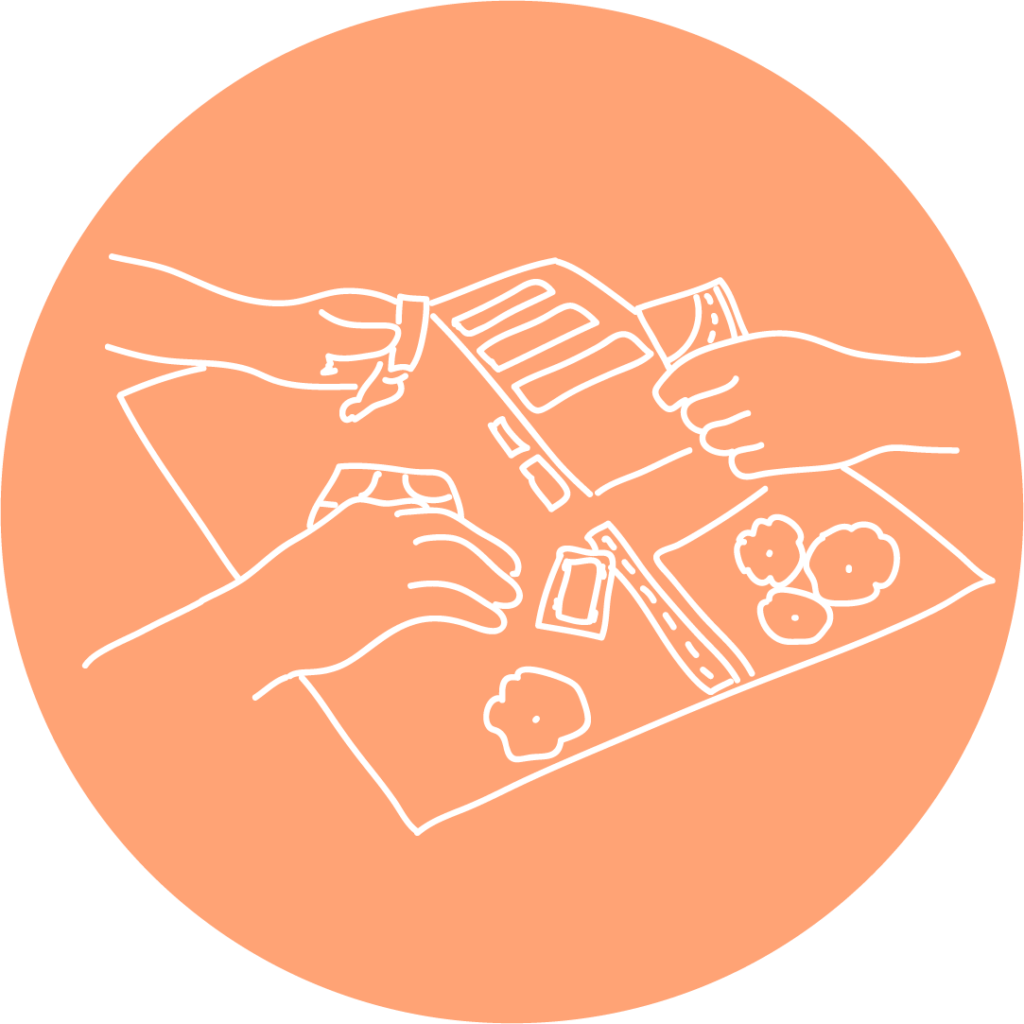Home / STREET PUZZLE
Recommended age: 8-18 years
Location: Outdoor or indoor
Time required: 1h
Materials/tools: Map of the place in A1 format, glued on cardboard sheet, and “puzzle pieces”.
Purpose: To visualise a place and explore urban planning in a playful way.
Where in the process: Vision and concept phase

The method involves having a large sheet of cardboard, preferably in A1 format, with a map of the location and scaled puzzle pieces in the form of cars, car parks, cycle lanes, pedestrian crossings, turning radius and turning zones, etc. depending on the location. The idea is for children and adults to work together to redesign the street, identifying problems and searching for possible solutions.
The method is good because it is action-packed and fast, while being creative and playful. If you involve transport planners in the workshop, this method has all the potential to lead to realistic solutions. You can quickly test whether your ideas are viable. For example, if you want to move car parks to free up space for play, you have templates for all the features you need: car parks, possible turning radii, loading zones and emergency routes.
You will need to print out maps of the place you will be working on, preferably in the form of satellite photos for easier legibility for the children. Make them to scale to be able to get the correct dimensions of the puzzle pieces. The puzzles you can download here are in scale 1:200. Create the pieces you need.
Feel free to make two versions of the maps: one that corresponds to the existing reality and another that only contains what cannot be changed. The second version makes it easier to visualise something new.
The workshop can be held indoors but, weather permitting, it can also be held outdoors at the site, precisely because it is easier to walk around and visualise it. If you choose to hold it outdoors, remember that you will need a table for each group.
As mentioned above, in addition to the children involved, transport planners can also be invited to the workshop to contribute their expertise. If you choose to mix children and adults in this workshop, make it clear in the introduction that the participation of adults is as important as that of children and that you expect their active participation.
Start by explaining the challenge, the purpose and what participants can expect from the workshop. Divide the participants into smaller groups. Give the groups some time to discuss the problem statement. The second step is to summarise the problem statement and, based on it, start playing and juggling with solution ideas. Test the ideas on the map by rearranging the street or urban environment you are working on.
Each group needs a facilitator from your team in order to help the children and adults move the conversation forward. Explain the pieces of the puzzle and document.
This method can be used on its own, for example if you want to work on urban planning with children or if you want to submit a citizen’s proposal to redesign a place that is not working well. It can also be part of a design process at an early stage of the visioning phase.
Download ready-made puzzle pieces in the form of turning zones, parking lots and width of cycle path. Scale 1:200.
We use cookies to give you the best experience on our website. If you continue to use this website, you agree to the use of cookies.
Vi använder cookies för att ge dig den bästa upplevelsen på vår hemsida. Om du fortsätter att använda den här webbplatsen godkänner du detta.